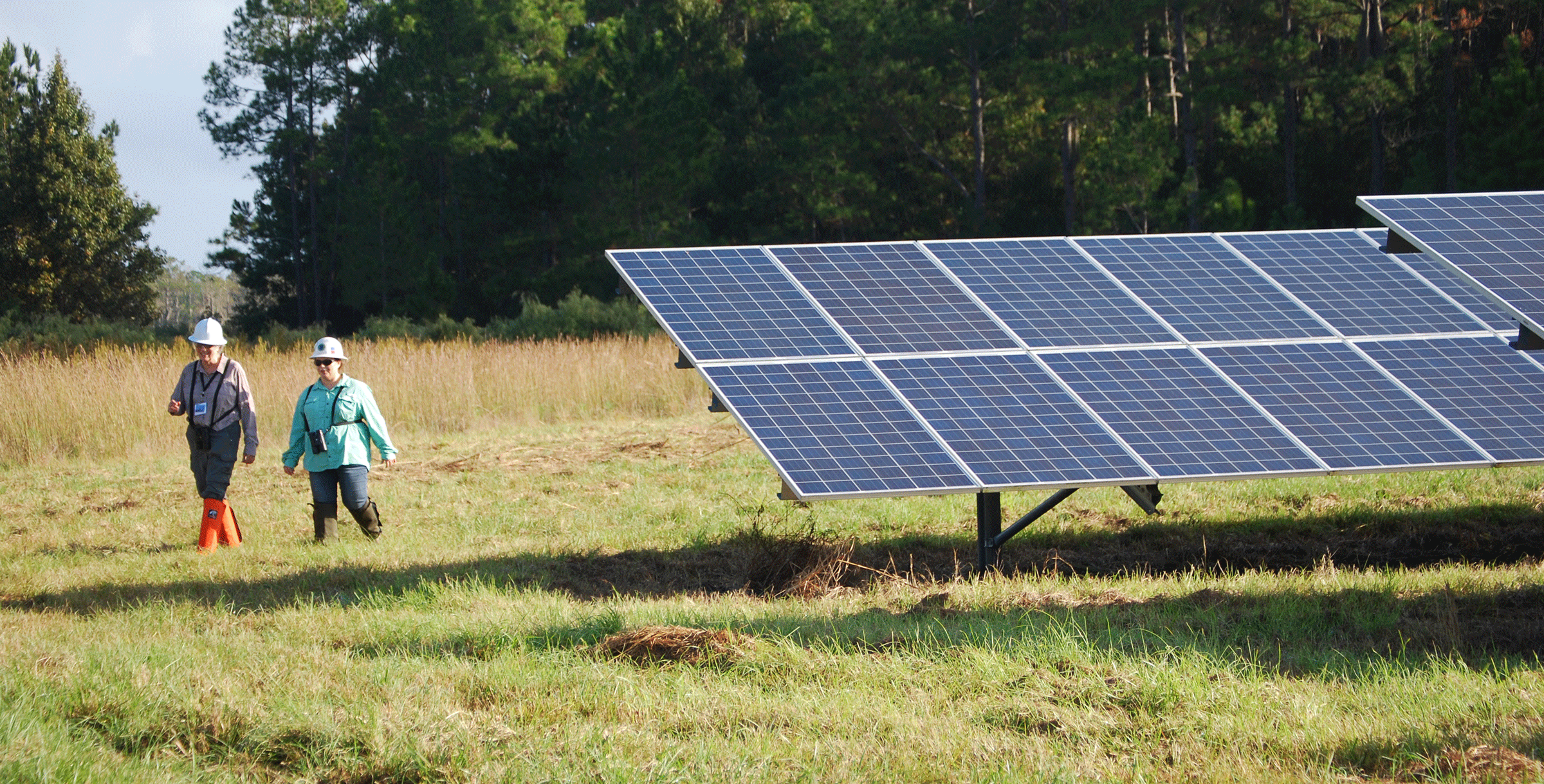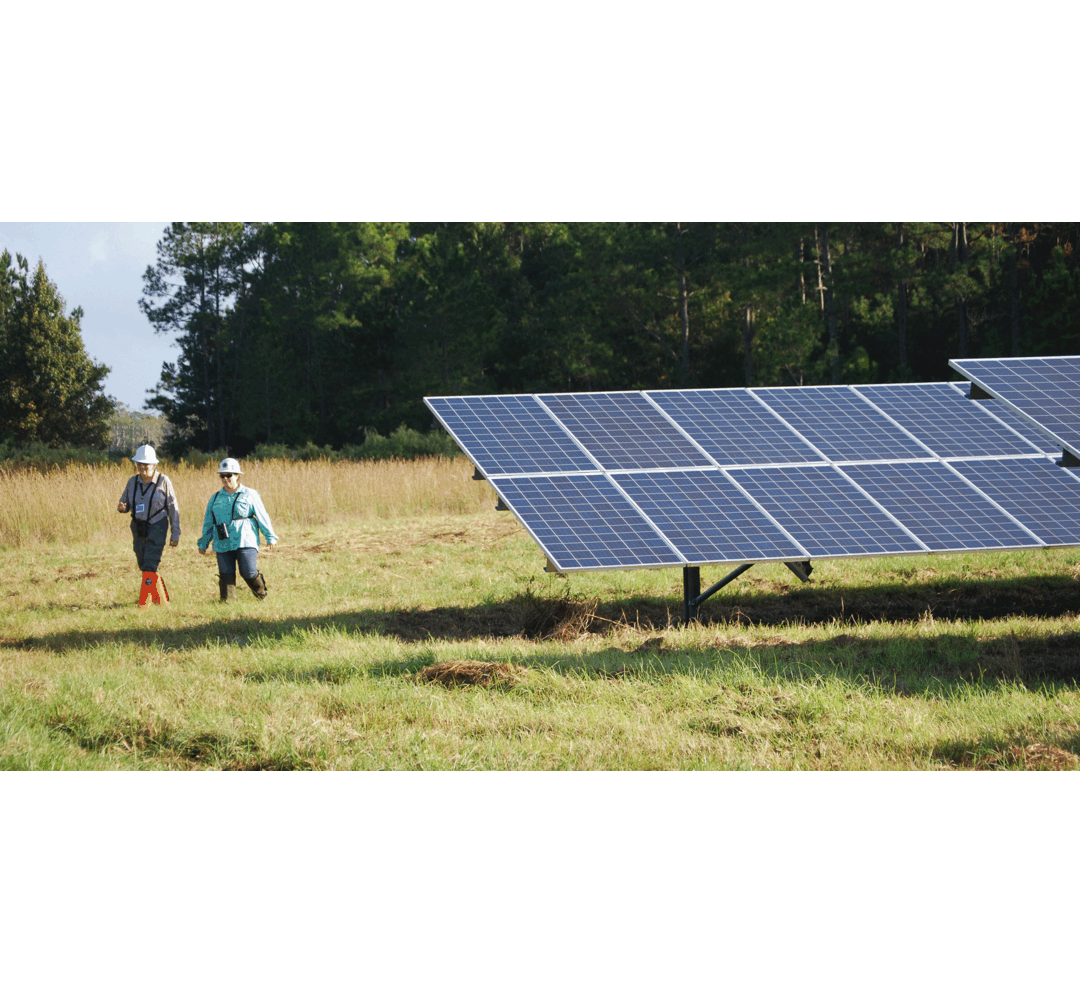Field trips bring Audubon members together, with birders from around the state seeking out both rarities and local favorites while bonding over conservation. At the 2019 Audubon Assembly in Gainesville, field trip participants birded in one of the most unique destinations in the gathering’s history: Florida Power & Light Company’s (FPL) Horizon Solar Energy Center.
Assembly visitors gathered early to see a working, large-scale solar site, while also tallying the types of wildlife that live in harmony with these clean energy centers.
In partnership with Audubon Florida, Horizon is one of FPL’s first solar stewardship sites. The solar plant was completed in 2018 and generates 74.5 MW on 684 acres of former agricultural land, straddling Alachua and Putnam counties. Solar energy generation supports Audubon’s goals of reducing water consumption and carbon emissions from fossil fuels, and environmental enhancements are added to these sites with input from Audubon to ensure sufficient natural resources are provided for birds, pollinators, and other wildlife. The Horizon facility generates zero-emissions electricity for FPL customers – enough to power approximately 15,000 Florida homes and equivalent to removing approximately 12,000 cars from the road each year.
The Assembly tour was led by Alachua Audubon Society member Adam Zions, who works for Golder Associates, the firm that provided consulting, design, and environmental stewardship services for FPL at its Horizon facility. Together with our FPL hosts, Adam explained how the solar plant was designed to minimize impacts to wetlands and other environmentally sensitive areas on the property.
A chain-link fence helps provide safety for people and security for the grid, but it doesn’t stop a wide variety of wildlife from using the resources. As part of FPL’s commitment to safety, the tour group strapped on snake chaps before setting out on the 2.5-mile hike through tall grass and wet prairie surrounding the solar panel arrays adjacent to one of the preserved wetlands. Fresh tracks left by a raccoon, deer, and even a bobcat made it clear that the property is a benefit to many types of wildlife. There was even a snake, although it wasn’t a venomous one.
Among the 27 species of birds recorded that morning were an American Kestrel perched on a wire, Eastern Meadowlarks and Eastern Bluebirds perched on the panels, an Eastern Phoebe hunting below the structures, and a Belted Kingfisher. It is clear that solar stewardship sites such as FPL Horizon Solar Energy Center are doing much more than powering people’s homes and businesses: they are also providing important habitat in a rapidly urbanizing world.











